5 Best Phones for League of Legends: Wild Rift in 2022 – Latest Guide

In this article, we are going to present which are the best phones for League of Legends: Wild Rift. Usually, the best-performing gaming phones are some of the latest state-of-the-art models. But we also know that not everybody can afford a high-end flagship. Therefore we included some affordable choices that offer an incredible balance between price and performance and will run League of Legends: Wild Rift smoothly.
League of Legends: Wild Rift is Riot’s mobile version of the well know game usually abbreviated as LoL. Obviously, they are not able to just translate the mechanics of the game straight onto a mobile platform. For that reason, Riot has made some basic changes for the game’s mechanics to be more fitting. One of the most notable changes introduced is an adaption of some characters’ abilities to better accommodate the switch in the platform. The sentinels on Wild Rift do not have turrets around them but actually, defend themself. This was mainly introduced to bring down the game’s timing to less than 20 minutes, as playing a game on a mobile device might not be as comfortable as playing on the PC.
The game can currently be played on Android, iOS. The cross-play between the Mobile version and the PC version will not be allowed, as this would be unfair due to several advantages the PC gamers would have. So in that regard, Wild Rift is a separate game with its own unique features. While the game’s mechanics might differ, the lore and in-game events will all be aligned. What Wild Rift does allow, is cross-play & cross-saves between mobile and console versions of the game, like Switch, PS4, and Xbox One.
DID YOU KNOW: If you are used to playing League of Legends PC, then it might come to you as a surprise, that in LoL: Wild Rift some price tags of items are different. Not only that but some Items are also assembled from different components. One other notable difference compared to the PC version is, that the pace of the game is much faster. For example, some monsters spawn much faster than you might be used to.
Another thing worth mentioning is that the field of the game’s view differs depending on the size of your phone’s screen. This means if you have a phone with a bigger screen you might have an edge over your opponent with a smaller screen ;).
NOTE: Below you can find a comparison table and a detailed description of the best phones for League of Legends: Wild Rift.
TOP RECOMMENDED PHONES FOR League of Legends
| BEST AFFORDABLE | RECOMMENDED | ||||
| Xiaomi Poco X3 Pro and F3 | Google Pixel 6 | iPhone 13 | Samsung Galaxy S22+ | Samsung Galaxy S22 Ultra | |
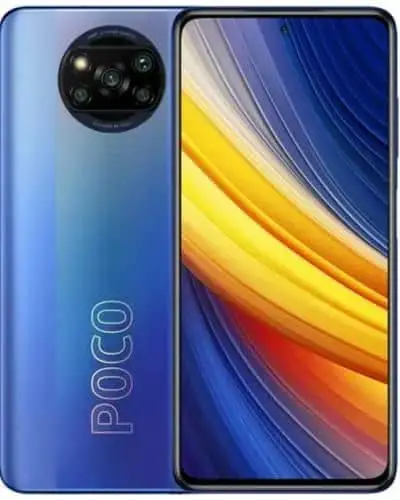 | 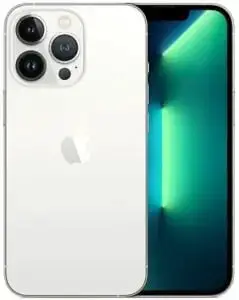 | 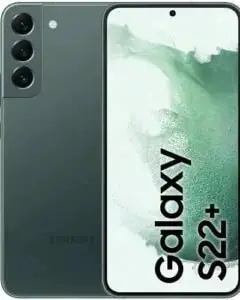 | 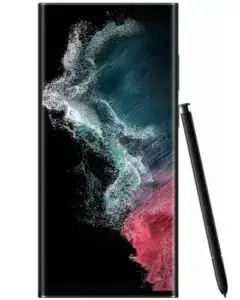 | ||
| Perfect For | Performance without breaking the bank | Mind blowing photo capabilities | Next level experience | Camera, gaming and web browsing | Most demanding users |
| Display | IPS LCD 120 Hz | AMOLED 90 Hz | 6.1 ” Super Retina XDR OLED | Dynamic AMOLED 120 Hz | Dynamic AMOLED 120 Hz |
| Operating System | Android 11, MIUI 12.5 | Android 12 | iOS 15 | Android 12 | Android 12 |
| Memory | Up to 256GB (8GB RAM) | Up to 256GB (8GB RAM) | Up to 512GB 4GB RAM | Up to 256GB (8GB RAM) | Up to 1TB(12GB RAM) |
| Camera | 48 MP | 50MP wide, 12MP ultrawide | 12 MP | 50MP wide, 10MP telephoto, 12MP ultrawide | 108MP wide, 10MP periscope telephoto, 10MP telephoto, 12MP ultrawide |
| Battery | Li-Ion 5160 mAh | Li-Ion 4614 mAh | Li-Ion 3095 mAh | Li-Ion 4500 mAh | Li-Po 5000 mAh |
| Sound | Stereo speakers | Stereo speakers | stereo speakers | Stereo speakers | Stereo speakers |
| Sensor | Side fingerprint | Fingerprint optical | Face ID | Fingerprint ultrasonic | Fingerprint ultrasonic |
| 2,963 Reviews | 1,395 Reviews | 250 Reviews | 21 Reviews | 232 Reviews | |
| Price not available | $469.50 | $949.99 | $799.99 | $993.50 | |
| Buy on Amazon | Buy on Amazon | Buy on Amazon | Buy on Amazon | Buy on Amazon |
League of Legends: Wild Rift Phone System Requirements
ANDROID
MINIMUM
- CPU: 1.5 GHz quad-core (32-bit or 64-bit)
- Memory – 2GB RAM
- OS – Android 5 and above
- Storage – 4GB space
IPHONE OR IPAD
MINIMUM
- CPU: 1.4 GHz dual-core (Apple A8)
- Memory – 2GB RAM
- OS – iOS 10 and above
- Storage – 4GB space
Some less powerful iPhones will still be able to run the game, but the gaming experience may not be as smooth as with officially supported devices. Please note that your device will require iOS 10 or later.
What are the best phones for League of Legends: Wild Rift?
Xiaomi Poco X3 Pro and F3 – best affordable phone for League of Legends: Wild Rift
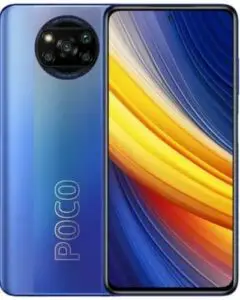
| HARDWARE | 7/10 | |||
| BATTERY LIFE | 9/10 | |||
| DISPLAY | 7/10 | |||
| MEMORY | 8/10 | |||
| VALUE/PRICE | 10/10 |
| CUSTOMER REVIEWS |
Key Features
|
|
|
Detailed Review
Poco X3 PRO and F3 are probably the best budget phones best phone for League of Legends: Wild Rift currently available on the market.
Poco X3 PRO comes with a 6.67 inch IPS LCD screen that also features a high refresh rate. Usually, you will find a 120 Hz refresh rate on more premium phones, but this one has it too. This basically makes scrolling, watching videos, and gaming super smooth and brings other benefits regarding display. There is also support for HDR10 and the phone features a Full HD resolution.
The phone runs on a Snapdragon 860 with Adreno 640 and is actually the only one to feature this chipset. It offers some of the best performance in its class. Compared to Galaxy A52 with Snapdragon 720G, the Poco X3 PRO just blows it out of the water. In terms of gaming performance, it is two times more powerful than Samsung’s mid-ranger. And it is much cheaper too. In fact, the phone can outperform almost all other mid-rangers.
You will most likely find a version with 6 GB of RAM, although there is a possibility of finding one with 8 GB. The 6 GB version is enough for everyday tasks and also for playing the most demanding games. You can still go for the 8 GB version which makes your phone a little more future-proof. The 6 GB version comes with 128 GB of storage and the 8 GB version can come either with 128 or 256 GB of storage. It does also offer a microSD card expansion so you don’t need to worry about running out of space.
The Poco X3 PRO has a large 5160 mAh battery and supports up to 33 W charging. It will take about 30 min to replenish 60% of the battery capacity, which is pretty good.
Another option, Xiaomi Poco F3, costs a bit more but improves in all areas. It still has 6.67 inches 120 Hz display but it is AMOLED, supports HDR10+, and can achieve greater brightness. The phone is powered by Snapdragon 870 and Adreno 650, which is an improved version of Snapdragon 865. One could say that it is the next best thing after Snapdragon 888. It comes with 6 or 8 GB of RAM.
Unfortunately, Poco F3 is not available in all countries. I added the links below to where the phone is available.
- Amazon DE – Germany
- Amazon FR – France
- Amazon IT – Italy
- Amazon ES – Spain
- Amazon UK – United Kingdom
- Outstanding value for the money
- 6.67-inch display 120 Hz display is amazing. Especially considering the price point
- Snapdragon 860 chipset is capable of running even the most demanding modern games smoothly
- Long autonomy provided by a large 5160 mAh battery
- It will get hot when playing demanding games. If possible we recommend playing without the silicon case for better heat dissipation
- Fast charging with 33 W also heats up the phone. This is normal but we don’t recommend playing any games while charging to avoid double heating
| LEARN MORE | OR | CHECK PRICE |
Google Pixel 6

| HARDWARE | 8/10 | |||
| BATTERY LIFE | 8/10 | |||
| DISPLAY | 9/10 | |||
| MEMORY | 8/10 | |||
| VALUE/PRICE | 9/10 |
| CUSTOMER REVIEWS |
Key Features
|
|
|
Detailed Review
Google Pixel 6 comes to the list of best phone for League of Legends: Wild Rift as a strong mid-range phone with a good price to value ratio.
As a Pixel user, you can count on long and fast updates. But the hardware is also pleasing: the display is great and photos are great in most conditions. The special AI and AI functions of the Tensor chip expand the possibilities in everyday life.
The Pixel 6 has a 6.4-inch OLED display in 20:9 format with a resolution of 2400×1080 pixels. This results in a good sharpness of 411 ppi (pixels per inch).
Like the Pro, the Pixel 6 has Google’s Tensor chip, which was created in cooperation with Samsung. The Titan M2 is responsible for an extra hardware security layer. Tensor is not primarily about maximum computing power. However, the focus is on AI (artificial intelligence) and ML (machine learning). This should make itself felt, for example, in speech recognition or when taking photos.
There are two cameras on the back. The main camera has an internal resolution of 50 megapixels, but it ends up throwing out a 12.5-megapixel photo due to pixel binning. The ultra-wide-angle lens turns 48 into 12.5 megapixels. Like the Pro, the Pixel 6 is said to capture up to 150 percent more light thanks to the significantly larger image sensor compared to the Pixel 5, which is particularly worthwhile for photos taken under poor lighting. Even in the worst light conditions, the “Night Vision” mode still brings out amazing details with unexpectedly natural colors. Photos are good with the Pixel in almost all conditions and better than most top-of-the-line smartphones.
The camera only falls short when zooming. But this is to be expected without a dedicated telephoto camera. In this case, the Pixel 6 Pro might be a better choice.
- Great screen
- Good photo quality
- Wireless charging
- Waterproof and 5G
- No memory card slot
- Smooth back
| LEARN MORE | OR | CHECK PRICE |
iPhone 13

| HARDWARE | 10/10 | |||
| BATTERY LIFE | 9/10 | |||
| DISPLAY | 9/10 | |||
| MEMORY | 9/10 | |||
| VALUE/PRICE | 10/10 |
| CUSTOMER REVIEWS |
Key Features
|
|
|
The iPhone 13 doesn’t exactly break the mold, as it brings the same shape and design as last year’s iPhone 12, but with one striking difference. The notch cutout for the selfie cam and face id is smaller this time around. The new iPhone is slightly heavier than last year, 10 grams to be exact. The rear cameras have a different diagonal arrangement, maybe because of the larger sensor in the main camera, but at its core, this is the elegant iPhone design we’re used to. The iPhone 13 has a flat corning-made glass back, with that signature apple logo. The phone is well-balanced and easy to wield. It offers a pretty good grip because of the flat and edgy aluminum frame. The iPhone 13 brings ip68 rated water and dust resistance. Apple claims it’ll survive for half an hour under six meters of water. The screen of the iPhone 13 is similar to last year’s – it’s a 6.1 inch super retina XDR OLED, protected by a ceramic shield, some of the toughest glass there is. While this year’s iPhone 13 pro brings a fast 120HZ refresh rate, the regular model still sticks to a standard 60HZ one. There is one advantage you get here over last year, and that is the max brightness. We measured around 800 nits here with the slider, compared to around 640 nits on the iPhone 12. This means using the phone out in the sun should be even more comfortable.
CHIPSET:
iPhone 13 brings a new chipset – the latest Apple A15 Bionic – this is one of the most powerful chipsets, you can get on a phone and it provides incredible performance as well as 5G connectivity. In CPU tests the iPhone 13 tops the charts scoring up to 15 percent higher than the iPhone 12. GPU performance is a different story though, because Apple has equipped this year’s pro models with an extra powerful GPU that has 5 cores instead of 4. This means that the vanilla iPhone 13 doesn’t quite match the graphics scores of the 13 pro or pro max, but it still does a great job, as the heaviest games run smoothly even on their highest settings.
CAMERA:
The iPhone 13 has a dual-camera system, the 12-megapixel (F/1.6 Dual Pixel AF, sensor-shift OIS) main camera, and a 12-megapixel (f/2.4, 120° field of view) ultra-wide lens, just like last year. But this time around the main camera features a new sensor with larger pixels as well as sensor-shift stabilizations. Photos from the main camera are rich in detail with great contrast and low noise- The dynamic range is not super wide, but is balanced and natural and the colors are true to life.
AUDIO:
The iPhone 13 has a pair of stereo speakers one at the bottom and the other at the top. They are well balanced and loud, scoring very well on our loudness charts and the sound quality here is exceptional. As with every iPhone, there is o 3.5-millimeter jack and you need to use an apple lighting adapter to plug in traditional headphones.
BATTERY:
The iPhone 13 has a 3240 milliamp-hour battery capacity, larger than the 2815 capacity on the iPhone 12, and battery life is better here. The new model scored an 89-hour endurance rating in our tests and allows for at least three more hours of video playback or web browsing. Because of the larger battery, the charging speed is a bit slower there. With apple’s 20 watt charger we’re able to charge the iPhone 13 from 0 to 54 percent in half an hour. There’s also support for wireless charging which goes up to 15 watts if you use a MagSafe charger.
CONCLUSION:
The iPhone 13 is a great phone, one of the best on the market. You get the signature iPhone design, which is super durable and it comes with an even smaller notch. Then there’s the powerful hardware, the bright screen, superb stereo speakers, and the excellent camera experience both in the day and at night. Overall it’s worth recommending which you’d expect from the latest -iPhone, but if you have an iPhone 12 already the differences here are too small to be worth an upgrade, and keep in mind that you don’t get a 120hz refresh rate autofocus on the ultra-wide or a zoom camera unless you go for one of the pro models.
- Very good chipset.
- Great battery life.
- Amazing value for the price you pay
- Pricey
| LEARN MORE | OR | CHECK PRICE |
Samsung Galaxy S22+ – best phone for League of Legends: Wild Rift

| HARDWARE | 9/10 | |||
| BATTERY LIFE | 9/10 | |||
| DISPLAY | 10/10 | |||
| MEMORY | 9/10 | |||
| VALUE/PRICE | 9/10 |
| CUSTOMER REVIEWS |
Key Features
|
|
|
Detailed Review
When talking about the best phone for League of Legends: Wild Rift we cannot go past the Samsung Galaxy series. The Galaxy S22+ is noticeably larger than its smaller brother, which also brings some benefits.
The most obvious one is a bigger and brighter display. The S22+ features a 6.6 inch Dynamic AMOLED display with 1750 nits peak brightness.
Thanks to an almost 90% screen-to-body ratio the phone is still slim and compact enough to be able to comfortably store it in your pockets. However one of the most distinctive features of this year’s display doesn’t come from hardware but software. The phone is able to reduce screen refresh rate down to 10 Hz when not needed. This greatly improves battery life.
The phone has 3 cameras. A 50M wide standard, 10MP telephoto with 3X optical zoom and a 12MP ultra-wide which also acts as a macro camera. The macro mode is triggered automatically when focusing on an object from a close distance. The telephoto lens is especially great too and optical zoom can be used on a variety of occasions. The phone is great at capturing night photos as well.
Performance is certainly not an issue as this phone features Snapdragon 8 Gen and comes with 8GB of RAM. The chipset can handle any demanding game without really breaking a sweat. And it is perfect for stuff like watching videos, social media browsing, websurfing and multitasking.
Whether you are considering this phone for its cameras of performance, you won’t be disappointed in any case.
- Beautiful and very bright display
- Powerful performance
- Faster 45W charging
- Improved camera set
- Battery life could be even better
| LEARN MORE | OR | CHECK PRICE |
Samsung Galaxy S22 Ultra

| HARDWARE | 10/10 | |||
| BATTERY LIFE | 10/10 | |||
| DISPLAY | 10/10 | |||
| MEMORY | 10/10 | |||
| VALUE/PRICE | 9/10 |
| CUSTOMER REVIEWS |
Key Features
|
|
|
Detailed Review
Samsung Galaxy S22 is for sure one of the best phone for League of Legends: Wild Rift.
The 6.8 inches dynamic AMOLED display is simply outstanding. It is actually the maximum size for a smartphone. Because the long sides are gently curved, the display appears borderless when viewed from the front. The resolution is extra fine at 3088 x 1440 pixels, as is the display quality.
While Qualcomm’s top SoC Snapdragon 8 Gen 1 from 2022 is installed in the USA, Samsung’s own production Exynos 2200 is used in the models sold in Europe. For the first time, it relies on an RDNA2 graphics architecture from AMD. The GPU, called Xclipse, supports hardware-accelerated ray tracing, which hasn’t been seen on smartphones before either. According to Samsung, “mobile gaming at console level” is possible.
What sounds promising looks different in reality: In synthetic benchmarks, the S22 Ultra is clearly above its predecessor, but it doesn’t come close to an iPhone 13 Pro. The S22 Ultra with a Qualcomm SoC also achieves better values, especially in graphics-heavy benchmarks. But all benchmarks aside the phone with both chip versions is a powerhouse and you will never experience any lagging even with the most demanding games.
The S22 Ultra is the Swiss Army knife for photographers – you always have the right tool at hand. But as is often the case with a universal tool: it is not perfect. The main camera pleases with excellent (108 megapixels) or very good (12 megapixels) image quality in brightness, and also performs excellently in low light. The telephoto modules impress with optimal light and complement each other perfectly. And finally the super-wide-angle module: very solid even in low light conditions.
Whether you are considering this phone for its cameras of performance, you won’t be disappointed in any case.
- Faster S Pen built-in
- Super bright display
- Cameras offer better low light performance
- Faster 45W charging
- Pricey
- Shorter battery life than S21 Ultra
| LEARN MORE | OR | CHECK PRICE |
Additional hardware information
CPU
The processor is the central processing unit in an electronic system such as a smartphone. The alternative and common English designation is CPU (Central Processing Unit). A processor is used to control various processes in the system. It handles task management and the distribution of data between individual units. The gigahertz value of a processor indicates its performance. It denotes the clock frequency with which the processing unit executes processes.
A cell phone processor works analogously to the CPU of a computer or controller in an electrical device. It processes individual instructions and program sections sequentially or simultaneously. At the same time, it manages data processing in the cell phone, for example during copy operations from the internal memory to a memory card or another device. The processor can consist of one or more computing cores that form the heart of an electronic system. In a smartphone, the CPU is responsible for the following tasks, among others:
- Execution of installed applications
- Controlling graphical displays via the graphics card
- Establishing connections such as WLAN or UMTS
- Processing user data
In simple words, the more powerful your CPU is, the better the game will run.
GPU
The GPU (Graphics Processing Unit) is a dedicated graphics processor in mobile devices. Its main task is to support the smartphone processor (CPU) in displaying 3D data. Including image processing, games, animations, VR applications, and augmented reality. A strong GPU affects the performance of the entire device and can also significantly improve energy efficiency. Therefore the battery capacity is exhausted more slowly.
With the constantly increasing specifications of mobile devices, especially due to ever higher display and camera resolutions, the role of the GPU is becoming more and more important. Accordingly, improved models are constantly entering the market. In system-on-a-chip (SoC) designs, the GPU is lasered into a chip together with the main processor and other components (multimedia processor, LTE modem, signal processor).
RAM
As soon as you execute a program, the associated data is stored in RAM. This means that programs load faster and are still available, even if you have already closed them. When you open an app, it loads all data into RAM the first time you start it. If you now close the app and start it again, the loading process takes less time. The data remains in the RAM as long as the device is supplied with power. If you turn off your smartphone or computer, all data stored in RAM is lost and has to be reloaded when you restart your apps and programs. Don’t worry, the draining of the memory does not affect any data that is in the main memory. So pictures, videos, and co. are still safe even after the power is turned off.
How long the app data remains in the RAM of your phone depends on how much it is available and how much of it other apps are using it. But the more you have it the better. And this is true also if you want to achieve the best gaming experience.
DISPLAY
The display is the most obvious component of a smartphone. It is the showcase for all content and the surface through which you interact with the device. The screen turns the built-in components inside out: It shows whether a smartphone works with a strong or weak chipset via smooth or jerky animations. It lets you judge the quality of the camera. And of course, it shows all the data and apps that are in the device’s memory.
Currently, two panel types are mainly found in smartphones: IPS LCD and OLED. In LCD (Liquid Crystal Display) technology, the individual pixels consist of liquid crystals that, in combination with a polarization filter, display a certain color depending on their orientation. In an IPS panel (In-Plain-Switching), the crystals are constructed in such a way that the display is particularly viewing angle stable. The flat backlight is crucial for the LC display.
The main advantage of OLEDs over IPS is the lower energy consumption. Especially with dark content, even illumination, and high contrast. One disadvantage is that the LEDs lose their luminosity to some degrees due to uneven use. This can result in a burn-in effect. Since the display substrate for the OLED matrix is often made of flexible plastic the phones can also have curved displays. OLED displays are being used more and more, especially in high-end phones.
BATTERY
The battery capacity of your phone does in principle tell you how long it will last before you need to recharge it. The bigger the battery the longer it should last. But it depends also on the power consumption which is in direct correlation with the hardware that is included in the phone, and the battery management algorithms that try to reduce the consumption and preserve the battery as much as possible. Except for the battery capacity, these values are never written in the specification of the phone as they are irrelevant for an average user.
The reason is that the biggest factor to how long your phone will last on one charge is how much you use it and how. For example the screen is one of the biggest energy consumers. So if you are using your phone a lot the battery will get drained quicker, obviously. Heavy multitasking and gaming are also energy demanding.
But nowadays many phones support fast charging, wireless charging etc. So you can charge your phone very quickly and you are good to go.
League of Legends: Wild Rift – CONCLUSION
Choosing a phone that will give you a great gaming experience is a lot like choosing a gaming computer. You need to first look at the official hardware requirements for the game you are interested in. If you want to get the best experience the phone should meet at least recommended requirements. But actually, when it comes to smartphones you should aim even higher.
It is well known that smartphones tend to get a little “slower” over time. Additionally, mobile games usually get updated more frequently. So to be on the safe side a good rule of thumb is to pick a phone that has at least one grade better components than recommended.
Any phone from our list will give you the best gaming experience. So if you stay within our selection of the best phones for League of Legends: Wild Rift you are good and ready to go. Have fun gaming.